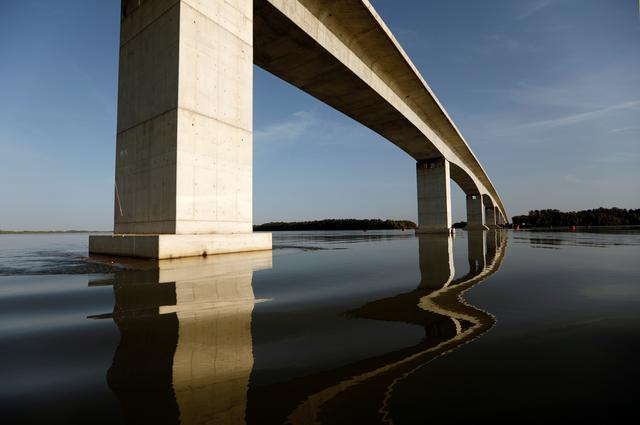
A gleaming new bridge in West Africa is transforming transport between Gambia and Senegal, but spells disaster for traders making a living off travellers making the agonising wait to catch a ferry across the Gambia River.
Gambia is a sliver of land on either side of the river cutting through the middle of the much larger Senegal, the product of a colonial-era deal between Britain and France staking a claim to each. The absurd geography means anyone crossing from northern to southern Senegal or vice-versa has to enter Gambia and, before the bridge, join long queues to cross the river. The wait for the ferry could take up to a week.
The 1.9 km (1.2-mile) Senegambia bridge, which opened to cars and minibuses last week, changed all that. Trucks will not be allowed on the bridge until July and drivers can hardly wait.
“A few months ago, I spent 10 days (at the ferry terminal) before it was my time to cross,” Senegalese truck driver Mawdo Saine told Reuters. “What you should do in one week, you end up doing in one month.” The bridge is also a welcome success for Gambia, one of the poorest countries in West Africa after more than two decades of dictatorship. But ferry operators and food vendors who serve the river traffic are struggling.
Wuyeh Jaiteh, who supports a large extended family, says he used to make 10,000 West African francs ($17) a day from ferrying people across the river. But since last week his customers have disappeared.
Jaiteh admitted the bridge was good for development, but, like other traders, said he would need government help. “We are appealing to the government to see how to help us because this is what we depend on for (our) livelihood.”
More news
- CELEBRATING EXCELLENCE IN THE RESIDENTIAL PROPERTY SECTOR
- PART 4: GIBS PANEL DISCUSSES INTEMEDIATE CITIES ROLE IN AFRICA’S DEVELOPMENT
- EXPOSED AGGREGATE PAVERS COMPLEMENT NEW LIFESTYLE CENTRE
- GIBS PANEL EXPLORES ROLE OF INTERMEDIATE CITIES IN SA’S DEVELOPMENT PART 3
- CITI-CON’S CONCRETE KNOWLEDGE SUCCESSFULLY DEPLOYED ON NEW LANDMARK DEVELOPMENT

